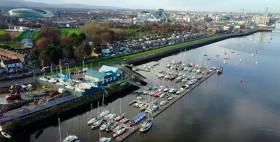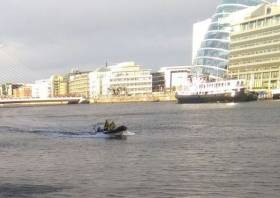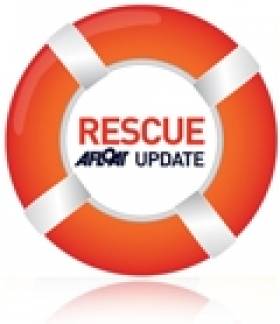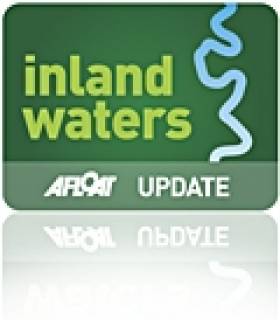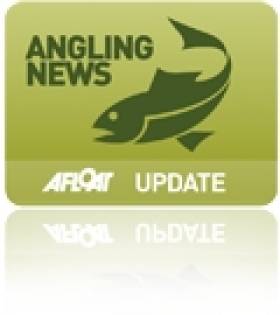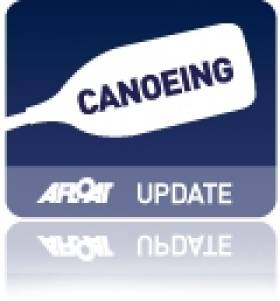Displaying items by tag: River Liffey
#Joyride - Two men appeared in court in Dublin yesterday (Thursday 1 June) over a boat chase on the River Liffey that surprised early morning commuters in the capital.
Brian Stacey and Ronan Stephens, both of Crumlin in south-west Dublin, face a number of charges relating to theft of a pleasure craft and boating under the influence of alcohol, according to The Irish Times.
Dun Laoghaire RNLI and the Dublin Fire Brigade were among the emergency services that responded to the incident around 6am yesterday after the €11,000 boat was taken from Poolbeg Yacht & Boat Club, which is preparing for this bank holiday weekend’s Dublin Riverfest.
The Irish Independent reports that a number of men on board the boat taunted those chasing them as they drove erratically through the Dublin Port shipping lanes east of the Eastlink Bridge, interfering with the passage of a cruise liner.
The boat was then pursued further up the Liffey, where it was finally halted at St John Rogerson’s Quay.
Both men arrested after the incident have been released on bail.
Man Rescued From Liffey On Christmas Morning
#Rescue - Gardaí and Dublin firefighters rescued a man in his 20s from the River Liffey in Dublin’s Docklands on Christmas morning.
According to the Dublin Fire Brigade Twitter account, the man was kept afloat by gardaí with a life buoy till he was recovered by the fire service rescue boat at Sir John Rogerson’s Quay shortly before lunchtime yesterday.
1 person taken from the #Liffey by our rescue boat. @GardaTraffic used life buoy to keep person afloat, John Rogersons Quay #Dublin #fire pic.twitter.com/yQDBVxw7vO
— Dublin Fire Brigade (@DubFireBrigade) December 25, 2016
In other rescue news, TheJournal.ie looks at the Irish Coast Guard’s operations nationwide, co-ordinating the 1,000 volunteers who “face peril on every call out”.
Body Recovered From River Liffey In Dublin City Centre
#Liffey - An emergency operation in Dublin city centre this afternoon (Monday 5 October) saw a body recovered from the River Liffey, as TheJournal.ie reports.
The body of a man was taken from the water around 2pm less than four hours after he was spotted from a bridge near the IFSC.
Emergency response teams from the Dublin Fire Brigade, the Irish Coast Guard, Dun Laoghaire RNLI and more raced to the scene for the multi-agency operation. The Journal.ie has more HERE.
Currachs Race & Yachts Parade into Dublin for River Liffey Spectacle This Weekend
This weekend the River Liffey and surrounding areas come to life in celebration of Dublin’s rich maritime heritage and local boating communities, past and present, with a mix of free open air spectacles and events for the public to enjoy both on the water and on land.
On Friday evening, 18th September, the Dublin Docklands Office and Oireachtas na Gaeilge will stage a Currach racing event on the River Liffey. At 5.30pm on Culture Night, currachs will set off from the pontoon by the Jeanie Johnston Tall Ship and race for 2km up river to the Ha’penny Bridge and back.
On land, a series of talks and films about currachs and the beautiful Galway Hookers will take place in the Dublin Docklands Office on Custom House Quay, while the Dublin Dockers’ Preservation Society will also host an exhibition of photographs chronicling the history and the people of the Docklands.
On Saturday, 19th September, Dublin City Council in conjunction with Dublin Port Company will open three bridges consecutively - the Samuel Beckett, Sean O’Casey and East Link bridges - over the River Liffey to allow the passage of yachts from Dublin Bay to the Custom House Quay area of the city.
The Parade of Sail & River Liffey Cruise event will feature as many as 30 sail boats which will congregate at the East Link Bridge at 3pm on Saturday 19th September 2015. Between 2.30pm and 3.00pm both the Samuel Beckett and Sean O'Casey Bridges will open, followed by the East Link Bridge.
The boats will make their way down the River Liffey through the three bridges and will turn at the Matt Talbot (Custom House) bridge and come back up the river where they will then dock at the pontoons outside the 3 Arena.
A spokesperson for Dublin City Council said: "The Dublin City Council Docklands Office were delighted to be associated with these events which is in keeping with their policy of animating the River Liffey and facilitating its use as a natural resource for the public."
Eamonn O’Reilly, Chief Executive, Dublin Port Company, said: “Dublin Port Company is committed to integrating Dublin Port with the city through a wide range of events and initiatives that celebrate the maritime heritage and traditions of Dublin as a port city. We are delighted to be involved with the Currach racing and Parade of Sail, and I would encourage everyone to come along and show their support for the boating community on the River Liffey this weekend.”
Dublin’s River Liffey To Welcome All Boats At Cruising Association Open Rally
With all the talk these days of cruise liners and where they might be berthed, we tend to overlook the fact that most recreational sailors in Ireland would list “cruising” as their primary boating interest writes W M Nixon.
But these mariners are thinking in terms of making determinedly non-racing sea passages – ranging from coastal hops of a couple of hours to voyages lasting many days – in command of their own vessels, rather than going as passengers on some cruise line company’s luxurious behemoth.
The Cruising Association of Ireland was set up to cater for their specialized needs, and although most of the members do their cruising on their own, or maybe in company with one other buddy boat, from time to time they organize cruises in company, while every so often there’s a CAI Rally.
One of the most successful was held in September 2014 in Dublin’s River Liffey, when Dublin Port put out the hospitality mat at the new pontoons at the Point Depot. After a Vessels Parade up to the Samuel Beckett Bridge once the East Link Bridge had opened to let the fleet through, all the usual inter-boat visiting in a large and varied fleet kept them busy at the Point Depot pontoons, and then the evening was rounded out with a convivial meal aboard the restaurant ship Cill Airne.
So successful was that gathering that upwards of 30 CAI boats have already signed up for this year’s assembly, which is this coming weekend, 19th to 20th September. The Association’s Commodore John Leahy emphasizes that it’s an entirely open event, and all boats are very welcome to take part whether their owners are CAI members or not, while powerboats are of course also warmly invited.

Last year’s CAI September Rally saw the Samuel Beckett Bridge being the upper limit of navigation, but this year it will be opened for the enlarged fleet. Photo: W M Nixon
The format has been stepped up, as they’ll now be also able to transit the Samuel Beckett Bridge for a proper river tour before berthing at the Point Depot, while the festivities at the Cill Airne on the Saturday evening have been developed further to include a hog roast, starting at 1900hrs.
In fact, Saturday is going to be one busy day, as they get through the East Link Bridge at 1500hrs, have their Parade of Sail “through three bridges”, berth up and socialize at the Point Depot Pontoons, and then take in a scheduled CAI tour of the very impressive German Tall Ship Gorch Foch at 1700hrs.
On Sunday 20th the Eastlink Bridge will be opened at noon to permit the fleet to head downriver again. But rather than heading straight back to their home ports, CAI visitors and their guests from outside the Liffey are thinking in terms of an informal gathering for Sunday lunch at the hospitable Poolbeg Yacht & Boat Club marina.
Gathering of voyagers. The impressive fleet at 2014’s Dublin CAI Rally is likely to be increased this coming weekend. Photo: W M Nixon
Man Rescued From Liffey In Dublin City Centre
#Rescue - TheJournal.ie reports on the rescue of a man from the River Liffey in Dublin city centure this afternoon (Monday 22 December).
The Dublin Fire Brigade (DFB) responded to the scene between the Ha'penny and Millennium Bridges not long after 2pm, as passers by attempted to reach the man with lifebuoys from the boardwalk above.
One firefighter was lowered down from the boardwalk to reach the man in the water, who was safely removed on the DFB rescue boat and taken for treatment at the Mater Hospital.
TheJournal.ie has more on the story HERE.
Boat Parade To Light Up Liffey This Saturday
#Liffey - A parade of illuminated boats is set to light up the River Liffey in Dublin city centre this Saturday evening 17 May.
Organised by the Dublin Branch of the Inland Waterways Association of Ireland (IWAI), the parade will depart from Grand Canal Dock at 8.30pm and will rally at the Civic Offices on Wood Quay around an hour later, ahead of a spectacular light show staged on a barge moored on the Liffey at 10pm.
This event is part of the IWAI's Dublin rally that began on 4 May and continued till saturday 24 May.
Nearly 100 boats are in Grand Canal Basin for the rally, many of them navigating the Royal and Grand Canals and River Barrow to Dublin for the rally. This year is a special celebration of a number of significant anniversaries.
Not only is the IWAI celebrating it's 60th year, but its Dublin branch is 50 years old this year, and this is the 30th year of the Dublin rally.
In addition, the Royal Canal Amenity Group is celebrating its 40th anniversary, while it's also 20 years since the Shannon-Erne Waterway was reopened as a gong concern, and 10 years since the IWAI's Boyne branch was founded.
The boat parade will also highlight the IWAI campaign for the reform of bye-laws governing Ireland's main inland navigation routes.
It's just one of numerous other events taking place including family fun days, BBQs and parties in various locations. For a full schedule of events and information on how you can get involved with the rally see the IWAI website HERE.
Catch-And-Release Christmas On Select Salmon Fisheries
#Angling - Christmas Day will see an early start to the new salmon angling season on a select number of fisheries.
As Derek Evans writes in The Irish Times, the early fisheries include the Lower Liffey - from Islandbridge to Leixlip Dam - for catch-and-release angling for the second year running.
Elsewhere, it's been announced that Inniscarra Lake in Co Cork will host the World Feeder Fishing Championships next July.
And a new book on Ireland's sea trout fisheries had recently been published.
Nomads of the Tides by Chris McCully and Ken Whelan details 50 different fishing locations with grid references and information on permits and local accommodation which will surely make it a must for angling tourists.
The Irish Times has more on the new book HERE.
Yellow Submarine Voyage For 50th Anniversary Of Irish Beatles Gigs
#YellowSub - It's recently charmed the denizens of Belfast - and now the famous Yellow Submarine is making its way from the Lagan to the Liffey to mark the 50th anniversary of The Beatles' first and only performances in Ireland.
As the News Letter reports, the colourful miniature vessel - a tribute to the 1968 album and animated movie of the same name - is headed to Dublin on the date the Fab Four played the old Adelphi Cinema five decades ago.
And it will also reach the Irish capital in time for a special weekend celebration of Beatlemania, the Dublin Beatles Festival from 7-10 November.
But Belfast fans have their own memories of the Liverpool lads' visit to their city - and even some who weren't born at the time are joining in with the festivities, such as 42-year-old Alan Gilfillan, the man at the controls of the former oil rig lifeboat converted to resemble the famous sunny-coloured sub.
The News Letter has more on the story HERE.
Kayak The Liffey By Night Starting This Month
#Kayaking - Dublin-based urban kayaking operator City Kayaking is planning to start night-time padding trips of the River Liffey this month - in plenty of time for Hallowe'en!
The company's Facebook page has images from a test run last week, showing off some of the spectacular lights that can be seen along the river from the Docklands to the city centre.
As reported this past August on Afloat.ie, City Kayaking was in the running to secure finding from the Arthur Guinness Projects initiative to expand its base and its offerings to locals and tourists alike to see the city like they've never experienced it before.




























